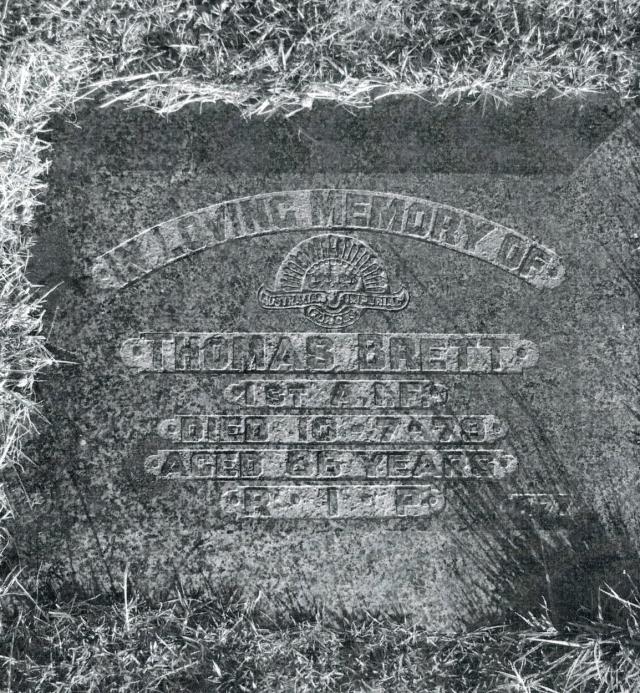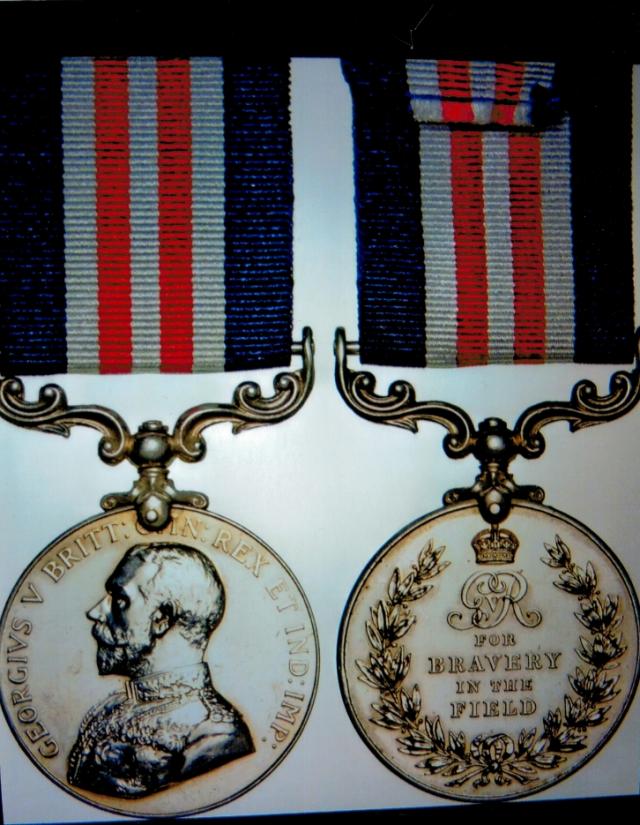In my latest research for local Military Medal winners in World War I, it was interesting to find a young man who had immigrated from Wales at the early age of seven years but grew up on his father’s property at the Head, Killarney, to later become an Anzac who was awarded the Military Medal for his leadership, initiative and bravery at the Battle of Ypres during the Allies push towards the Somme in 1918.
Tom’s story began at the seaside town of Llandudno, Wales, where he was born in 1892, another son to John and Ellen Brett. He was one of a family of eight siblings when the family set sail for Queensland on board the migrant ship the “Duke of Argyle” in 1899.
The family arrived in Brisbane before moving to the farming district at the head of the Condamine River. John immediately gained employment in the rural areas, as he was an expert in threshing machines, and as a Ploughman and Teamster working with eight horses.
In 1902, John took up two blocks of land at the place known as the Head (mainly because it was the head of the Condamine River) and by 1903 built a solid home for his large family. All the children attended the local Killarney State School that had opened in 1874. Not much information was obtained as to Tom’s early life but his enlistment papers in 1915 gave his occupation as a Teamster which led to the thinking that he was working on the property at the outbreak of World War I, or on other district farms in this line of work.
With the whole country committed to the war effort, recruiting officers travelled to many outlying communities in an effort to keep Australia’s commitment to Britain. When the recruiting team came to Warwick in 1915 many young men of military age took up the challenge that offered adventure, a uniform, and a very good wage that was, in some cases, more than they were earning. So, at the age of 23 years, Thomas enlisted at the Warwick recruiting office on 4 December 1915.
Tom was sent to Brisbane for training and was then posted to the 9th Field Artillery Brigade, 33 Battalion. On 11 May 1916, Tom embarked on the troopship “Argyllshire” for England. He was soon into action when sent to Belgium with his unit from 15 June until he suffered the effects of gassing and was admitted to the military hospital at Estaples to recover. After regaining his health Tom was promoted to Corporal and was granted leave which he took in London until 15 October 1917.
Tom’s leadership and bravery in the field were coming under notice by his unit commanders and he was promoted to Sergeant on 30 November 1917. Tom’s actions in a battle near a small town east of Ypres became his finest hour when the Commander of the 12th Army Brigade Lieutenant Lloyd recommended him for the Meritorious Service Medal on 5 May 1918. Here is what the recommendation said:
“For consistent cool determination and personal example during operations east of Ypres in September/October. On three occasions when his battery was being heavily shelled, regardless of danger, Sergeant Brett, by force on personal example, kept his detachment assiduously applied to extinguishing fires and saving material and ammunition. On the last occasion, he fought his gun the only one left in action, under heavy high explosive and gas shelling, till a gas shell casualtied the remainder of his detachment. His continued soldierly bearing is of the highest value”
This award is the same as that awarded to Tannymoral’s Tom Gollan of No 2. Army Tunnelling Company in 1917.
Tom was promoted to Warranted Officer Class 2 on 26 June 1918, and when the war ended, he returned to Australia on the HT “Port Napier” on 12 May 1919.
Tom returned home to the family home at The Head, Killarney, and in 1920 he met and married Vera Francis Foster in 1920, and together they had three children.
Tom also took up employment with the State Coal Mine as Chief Clerk and lived in Lithgow for 17 years. He later moved to Rathdowney in Queensland and became the Inspector of the Moreton Bay Rabbit Board in 1951, after serving in the Volunteer Defence Corps from 1942 to 1944 as a Lieutenant, with the 5th Battalion.
Tom became an active member of the community at Rathdowney and in his later life, he worked tirelessly on the Rathdowney Memorial Grounds as treasurer and later president. He hosted a variety of charity events and dances for the Red Cross and Bombing Victims Fund.
Tom was a very modest and humble man who never made a big thing about his courage in World War I. When he passed away on the 10 May 1979, for some reason that exemplifies his modesty, he did not include his MSM on his gravestone. Tom now lies at rest in the Beaudesert General Cemetery, Queensland. A very brave heart at rest.








